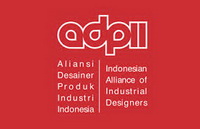Tinjauan biomimikri pada bentuk umpan pancing ikan artifisial
Abstract
This research examines the form relations of artificial fishing lure designs created from the inspiration of living creatures. The study was conducted to identify the various forms of artificial fishing lures and the types of living things they imitate, by collecting data on artificial fishing lures through direct observation, internet studies, and literature studies. The research method used was qualitative with a collective or compound case study approach. It was found that not all artificial fishing lures are realistically similar to living creatures, even in the category of metal wire baits, the shapes tend to be abstract and difficult to guess, but can still be used for fishing. It was also found that some of these baits when used have simulated movements like living things because there are various features that support their bodies such as weights, pendulums, rotating blades and so on. The results of this research can be used as recommendations for developing aspects of design forms based on the Biomimicry method in making decisions to solve problems in the scientific field of product design.
Keywords
Full Text:
PDFReferences
Arnosky, J. (2014). Hook, Line and SeekeA Beginner’s Guide To Fishing, Boating, and Watching Water Wildlife. Star Kids Media.
Barrett-Zahn, E. (2023). Inspired by Nature: Biomimicry. Science and Children, 60(6), 5-5. Retrieved from https://www.proquest.com/openview/e2520b43cdb4297eb74375db19c7ca21/1?pq-origsite=gscholar&cbl=41736
Benyus, J. (2014). Biomimicry Innovation Inspired by Nature. Harper Collins.
Bernando, A. (2021). Kelebihan & Kekurangan Ragam Umpan Pancing Ikan Artifisial Bentuk Katak. Narada : Jurnal Desain dan Seni, 8(1), 59–70.
Canbazoğlu Bilici, S., Küpeli, M. A., & Guzey, S. S. (2021). Inspired by nature: An engineering design-based biomimicry activity. Science Activities, 58(2), 77-88. DOI: https://doi.org/10.1080/00368121.2021.1918049
Creswell, J. W. (2018). Qualitative Inquiry and Research Design Choosing Among Five Approaches (C. N. Poth, Ed.). India: SAGE Publications.
Dhamdar, T. S., Sandhya, K. V., & Basavaraj, B. V. (2024). Advancing Innovation through Biomimicry and AI: Inspiration to Implementation. BIONATURE, 44(1), 16-27. DOI: https://doi.org/10.56557/bn/2024/v44i12013
Ersanlı, E. T., & Ersanlı, C. C. (2023). Biomimicry: Journey to the Future with the Power of Nature. International Scientific and Vocational Studies Journal, 7(2), 149-160. DOI: https://doi.org/10.47897/bilmes.1388402
Gdalbass. (2024, April 2). Basics: Hard Bait. https://www.gdalbass.com/tips?lightbox=dataItem-kv18i7ik1
Gdalbass. (2024a, April 2). Basics: Soft Bait. https://www.gdalbass.com/tips?lightbox=dataItem-kv18i7ik
Gdalbass. (2024b, April 2). Basics: Wire Bait. https://www.gdalbass.com/tips?lightbox=dataItem-kv18i7ik2
Hasibuan, M. (2020). Upaya Peningkatan Kemampuan Belajar Siswa Kelas VII SMP Negeri 4 Setia Bakti Dalam Pendidikan Berkarakter Dengan Pendekatan Metode Studi Pustaka. 2(3).
Lestari, D. (2020). Biomimicry learning as inspiration for Product Design innovation in industrial revolution 4.0. International Journal of Creative and Arts Studies, 7(1), 1-18. DOI: https://doi.org/10.24821/ijcas.v7i1.4160
Lurie-Luke, E. (2014). Product and technology innovation: What can biomimicry inspire? Biotechnology advances, 32(8), 1494-1505. DOI: https://doi.org/10.1016/j.biotechadv.2014.10.002
Lynch-Caris, T. M., Weaver, J., & Kleinke, D. K. (2012, June). Biomimicry innovation as a tool for design. In 2012 ASEE Annual Conference & Exposition (pp. 25-265). Retrieved from https://www.researchgate.net/profile/Jonathan-Weaver/publication/344840406_Biomimicry_Innovation_as_a_Tool_for_Design/links/5f9a0d14458515b7cfa72c49/Biomimicry-Innovation-as-a-Tool-for-Design.pdf
N. S. Mudawamah. (2020). Perilaku pengguna internet: studi kasus pada mahasiswa jurusan perpustakaan dan ilmu informasi UIN Maulana Malik Ibrahim. 4(1).
Orvis. (2024, April 2). Deluxe Euro Nymph Fly Assortment. https://www.orvis.com/deluxe-euro-nymph-fly-assortment/26RE.html
Purwaningsih, R., Wicaksono, P. A., & Saptadi, S. (2020, April). The bio-mimicry method in creative process of new product design inspired by nature solution. In AIP Conference Proceedings (Vol. 2217, No. 1). AIP Publishing. DOI: https://doi.org/10.1063/5.0000926
Soedarwanto, H. (2018). Teori Vitruvius VS Teori Sir Henry Wotton Dalam Desain Produk. Narada : Jurnal Desain dan Seni, 5(2), 17–26.
Storm Fishing. (2024a, April 2). Storm Fishing Products. https://storm.fishing/
Storm Fishing. (2024b, April 2). Storm WildEye Soft Shad SD. https://hosports.eu/en/info/storm-wildeye-soft-shad-sd.html
Sudiono, L., REPPIE dan, E., Studi Pemanfaatan Sumberdaya Perikanan, P., & Perikanan dan Ilmu Kelautan, F. (2015). Pengaruh umpan buatan terhadap hasil tangkapan pancing layang-layang di Selat Bangka The effect of artificial bait on the catch of kite fishing in Bangka Strait. Jurnal Ilmu dan Teknologi Perikanan Tangkap, 2, 6–12.
Tavsan, F., & Sonmez, E. (2015). Biomimicry in Furniture Design. Procedia - Social and Behavioral Sciences, 197, 2285–2292. DOI: https://doi.org/10.1016/j.sbspro.2015.07.255
DOI: https://doi.org/10.24821/productum.v7i1.12638
Refbacks
- There are currently no refbacks.
p-ISSN 2477-7900 | e-ISSN 2579-7328

This work is licensed under a Creative Commons Attribution 4.0 International License.
Like & Follow Us










